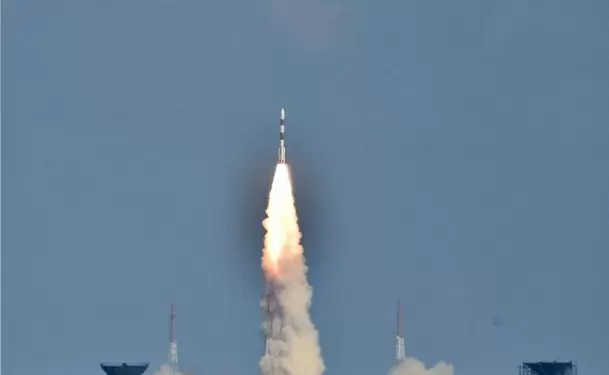Space Liability Pool a way out to cover space risks?
21-September-2020

With the Indian government deciding to allow the private sector to manufacture and launch rockets and satellites, the next issue facing the industry is the availability of insurance cover for third party liability against damages to property and lives a" on the ground and in space.
In India, space insurance is almost zero.
"The Indian Space Research Organisation (ISRO) would take insurance cover only for satellites it launches from outside India through other space agencies. It does not insure its rockets or satellites launched from India by its own rockets," G. Srinivasan, Director, National Insurance Academy (NIA) and former Chairman-cum-Managing Director, New India Assurance Company Ltd.
Srinivasan said, a consortium of four public sector insurers would provide insurance cover for ISRO satellites launched from a rocket port outside India.
Presently there are two startups in India -- Agnikul Cosmos and Skyroot Aerospace -- which are in the process of manufacturing small rockets -- with a carrying capacity of 100-300kg satellites -- to low earth orbit (LEO).
Similarly, satellite manufacturing start-ups are also there in the country.
Speaking at a recent space sector conference Niti Aayog member V.K. Saraswat said the launch of small satellites will be a dominant factor in the global space sector, as around 7,000 satellites are expected to be up in the skies by 2027.
He said that market researchers predict remarkable growth in the launch of small satellites. Over the last five years, 190 such satellites have been launched globally.
The Indian rocket and satellite makers are hoping to get some part of that business.
For the insurers, to arrive at a proper risk cover and the premium rate, there is no India specific data as ISRO is the only player operating and did not take any insurance covers for its launches from India.
The rocket and satellite insurance can be divided into various phases -- production, pre-launch, launch and in-orbit. During these phases the rocket and the satellite are exposed to varied risks.
Apart from the risks at their factories, the rockets and satellites are also exposed to several perils while they are in transit from their factories to the rocket port and finally to the launch pad.
Once the rocket lifts off from the launch pad with the satellite, there is the risk of damage to the launch vehicle and its payload, lives and properties of third parties as well as to the rocket port. There is also the risk of damage to third party satellites orbiting in the skies.
"The damage to third party properties - orbiting in the space or on the ground -- by a rocket built and owned by a start-up can break the companies in the nascent sector if they have to bear the liability in full," Pawan Kumar Chandana, Co-Founder, CEO and CTO of Skyroot Aerospace had told IANS.
He wants part of the liability to be shared by the government at least in a graded manner - based on the turnover or number of launches or other manner.
"Though there is no clarity on the space liability insurance, the premium should also not be high. On the other hand, the insurance for property damage on the ground could be like that of the aviation insurance," Chandana added.
"In order to derisk new start-ups the government should set up something like the Nuclear Pool. Collect minimal premiums from the entrepreneurs and pay liability claims as per international norms and for the amount exceeded, be the insurer of the last resort. This is what the governments of the UK and US did after 9/11. Set up pools of last resort," R. Raghavan, former GM, General Insurance Corporation of India, and the founder-CEO of the Insurance Information Bureau, told IANS.
According to NIA's Srinivasan, the aviation insurance sector itself is a small segment in India and the space sector is miniscule in terms of number of launches.
"The space sector insurance is largely reinsurance driven. Globally the experience is not very adverse. There is sufficient reinsurance capacity available now and there is no need for a Space Liability Pool," Srinivasan said.
Responding to that Raghavan said, the proposed pool could be a Capacity Pool (each insurer declaring the capacity up to which he can provide cover).
"The government can provide the top ups. The Pool can act as a buffer between the private sector and the insurers. Further the Pool ensures safety and self reliance. The compliance cost of insurance will be high for small space start-ups," Raghavan, also the former Chief Operating Officer of ITI Reinsurance Ltd added. - IANS
Conspiracy Underway To Remove Nitish Kumar, Claims Mukesh Sahani
‘Something Wrong’: SC Questions Madras HC’s Handling of Karur Stampede Case
Sir In Bengal: Eci Identifies 58 Lakh Excludable Voters After Enumeration Phase Ends
Shivakumar Defends Hate Speech Bill, Accuses BJP Of Spreading Division, Hatred Among People
Opposition Moves to Impeach Justice G R Swaminathan; Kanimozhi Cites Loss of Public Trust









